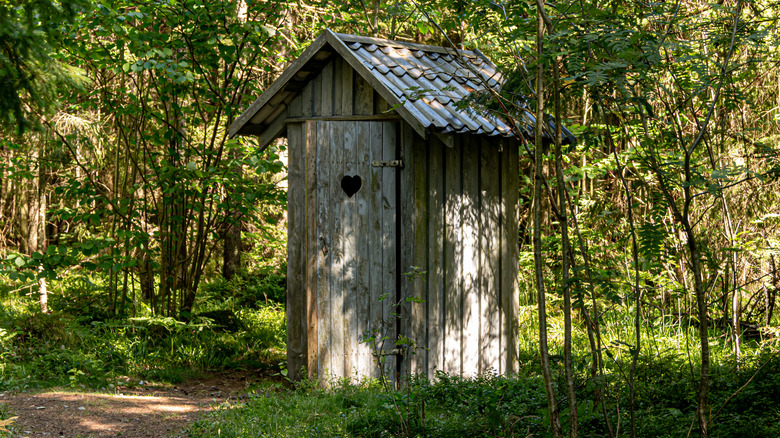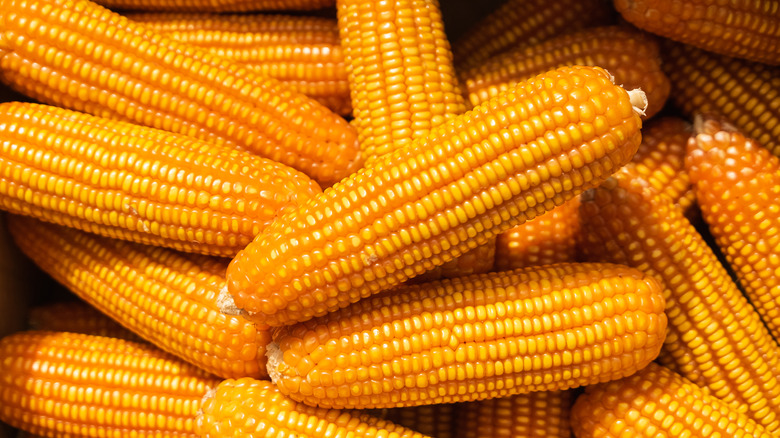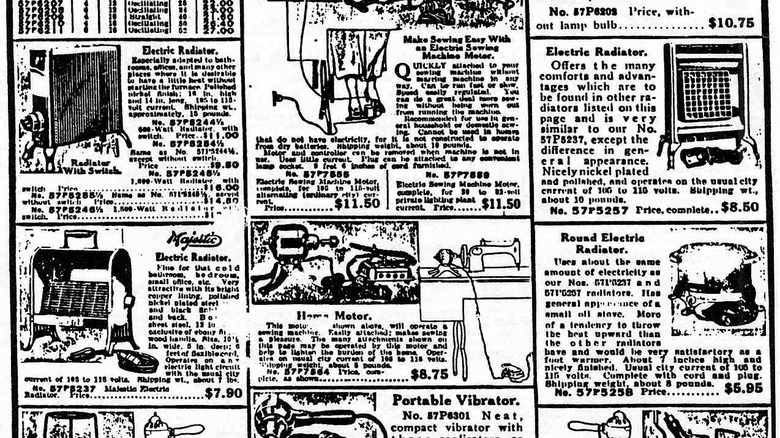Here's Why Americans Once Used Corn Cobs For Toilet Paper
Readers of a certain age may remember a time when the toilet-paper industry's advertising was a bit less direct than it is now. You may remember the tagline, "Don't squeeze the Charmin," a bit of ad copy intended to tout the softness and absorbency of the product, rather than what it's actually used for. These days, however, toilet paper commercials show cartoon animals actually seated on the toilet, or people pulling off a few squares. It's a reflection of our popular culture — at least, as it relates to what is broadcast into people's homes on TV — becoming a bit more open about matters that were once private.
The thing is, toilet paper as we know it is a relatively recent invention. According to History, the product didn't really become a thing in the United States until 1857, and it took a while to catch on. That's at least partly because there were cheaper alternatives — and here "cheaper" means "free for the taking." One of those alternatives was the humble corn cob.
The Corn Cob Worked Surprisingly Well
Here's the thing about corn: It's cheap, it's abundant, and it grows just about everywhere, according to the Washington Post. The first settlers to the U.S. figured this out pretty quickly, and it became not only a staple foodstuff of Americans, but as an added bonus, corn cobs — once the kernels are removed, that is — were perfect for cleaning up after, well, you know. As the Farmers' Almanac notes, its shape is just about perfect for this off-label use, and the husk is softer than you might suspect (although we're not interested in trying this for ourselves). Or as Dollar Shave Club notes, it's "softer than a rock," which was pretty much your only other option at the time.
The use of corn cobs as toilet paper had a rather disgusting downside, however. According to Dollar Shave Club, American outhouses had one corn cob, and one cob only, hanging on a string in them. That means that their use was communal; entire families (or schools, or church congregations) would use the same one. Please feel free to shudder in disgust before continuing reading.
From The Corn Cob To Toilet Paper
As mentioned above, toilet paper as we know it didn't become a thing in the U.S. until 1857, but even so, many Americans were keen to continue using corncobs, according to the Farmers' Almanac. Why pay for something when you can get a perfectly reasonable alternative in abundance for free?
Although Americans didn't immediately cotton on (no pun intended) to commercial toilet paper, another form of paper soon became a staple of every American home: the Sears Roebuck catalog (pictured above). As the Farmers' Almanac notes, the thick book was printed on newsprint, which was soft and absorbent. However, when they switched to glossy paper, according to History, Americans resorted to using the Farmers' Almanac. The publication embraced its off-label use, and began famously manufacturing its tomes with a hole pre-drilled into them, for hanging in outhouses.
By 1930, according to Dollar Shave Club, toilet paper manufacturers were competing with each other to produce the softest product, forever putting an end to the need to use corncobs or comparatively harsh paper products to get the job done.


